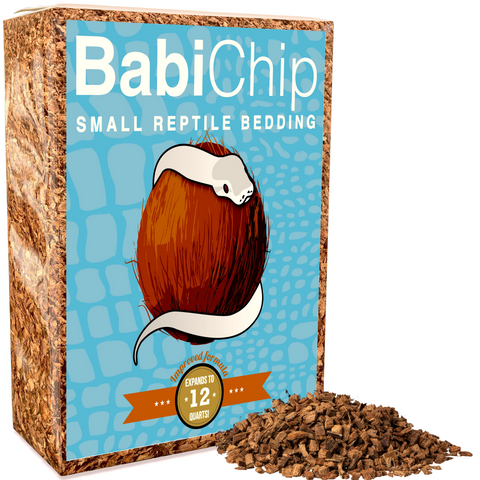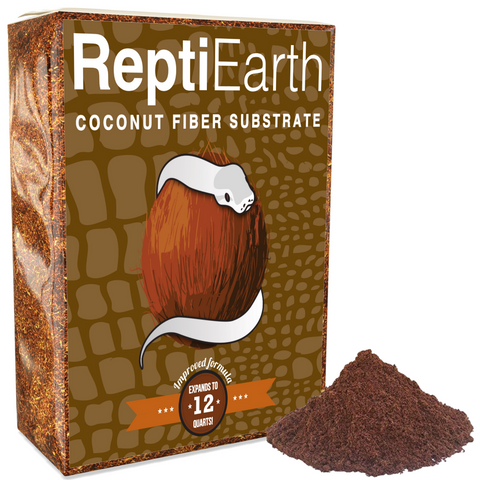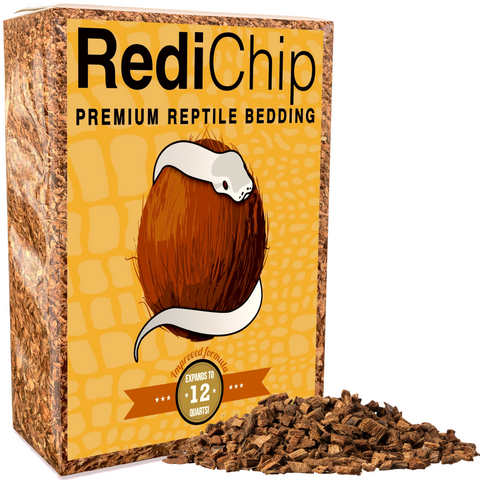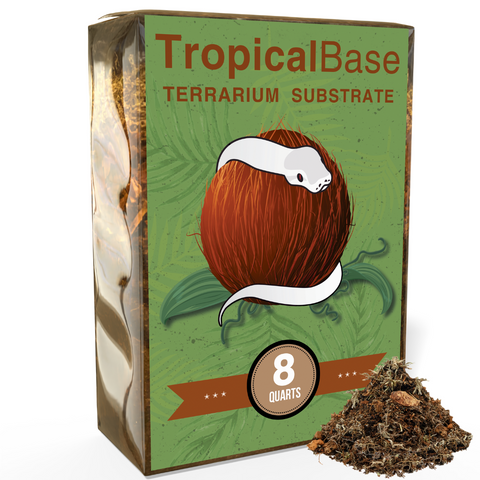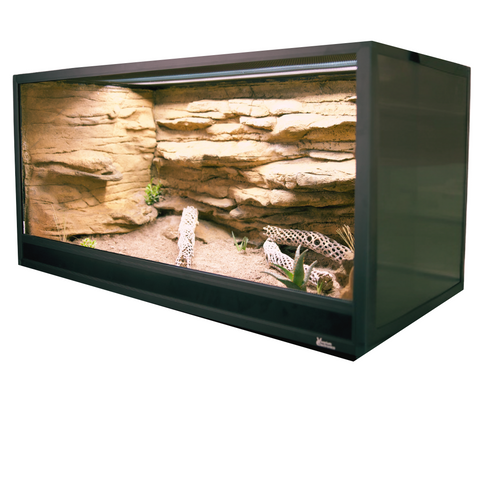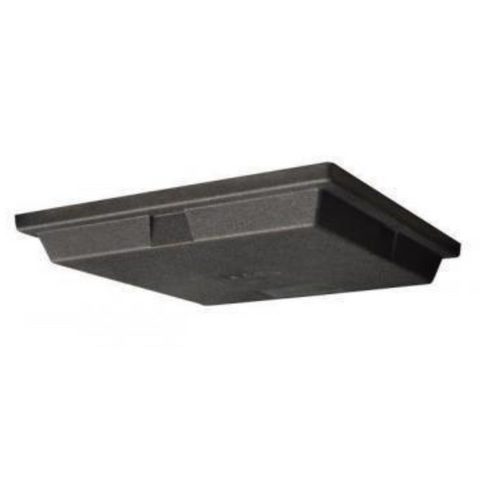Natural History
The species hatches from eggs after an incubation period of approximately 60 to 80 days, depending on temperature and humidity conditions. Hatchlings emerge at around 12-16 inches in length with a slender body and a vibrant silver or gray coloration distinct from adults. Their growth rate is steady, and under optimal conditions, they can reach sexual maturity in about three to four years. As they mature, their coloration shifts to an emerald-green hue, a characteristic transformation that typically occurs around 12 to 24 months of age. This color change is not strictly tied to age but is influenced by factors such as diet, shedding cycles, and individual genetic variation. In captivity, they generally live between 15 to 20 years, though some individuals can surpass this range with exceptional care.
The species exhibits a primarily arboreal and semi-fossorial lifestyle, often found navigating dense vegetation and utilizing underground retreats for shelter. Though they are excellent climbers, they also spend a considerable amount of time on the forest floor, particularly when hunting. Their hunting strategy is largely ambush-based; they rely on their cryptic coloration to remain concealed among foliage before striking with precision. They are non-venomous constrictors, subduing prey by coiling tightly around it until suffocation occurs. In the wild, their diet consists of small mammals, birds, and occasionally amphibians. Generally, they are solitary animals, only seeking out mates during the reproductive season. During courtship, males engage in ritualistic behaviors, sometimes including body vibrations and gentle nudging. While not overtly territorial, they may exhibit defensive posturing when threatened, such as flattening their body to appear larger or displaying rapid head movements. Their primary defense mechanism is avoidance, but if cornered, they may strike or release an odorless musk.
As a mid-level predator, they play a critical role in maintaining ecological balance. They help regulate populations of small rodents and other prey species, reducing potential overpopulation and associated ecological consequences. Conversely, they serve as prey for larger predators, including birds of prey and certain mammalian carnivores. Their green coloration provides exceptional camouflage in the canopy, aiding in both their predatory efficiency and avoidance of detection by predators. Environmental adaptability allows them to thrive in various forested and montane habitats, where they contribute to nutrient cycling by redistributing organic material through their feeding and digestion processes. The species' sensitivity to habitat disturbance makes them an important bioindicator, reflecting the overall health of their environment and signaling the effects of deforestation and climate change.
Conservation Status
The current conservation status of this species, according to the International Union for Conservation of Nature (IUCN) Red List, is listed as Least Concern. This classification indicates that wild populations are relatively stable, with no immediate risk of significant decline. The species has a wide geographic distribution across parts of China and northern Vietnam, primarily inhabiting temperate forests, montane regions, and areas with abundant vegetation near water sources. While some localized population declines have been reported due to habitat degradation and collection for the pet trade, overall numbers remain sufficient to prevent placement in a more threatened category. However, ongoing monitoring is necessary to ensure that populations do not experience rapid decline in the future.
Despite its status as Least Concern, the species faces several threats in its natural habitat, with habitat destruction ranking among the most significant. Deforestation for agriculture, urban expansion, and infrastructure development continues to reduce available habitat. The clearing of forests and conversion of land for human use fragment populations, isolating individuals and reducing genetic diversity. Climate change may also contribute to habitat alteration, affecting temperature and humidity levels that influence reproduction and prey availability. Additionally, the species is subject to collection for the international pet trade, which, while not yet at crisis levels, poses a risk if not properly regulated. Although captive breeding has reduced some pressure on wild populations, illegal collection still occurs in certain regions, potentially impacting local stability.
Conservation efforts are in place to help ensure the long-term survival of wild populations. Protected areas and national parks in parts of the species’ range provide some level of security, preserving key habitats and limiting deforestation. Regulations on international trade, including restrictions under the Convention on International Trade in Endangered Species of Wild Fauna and Flora (CITES), work to control the export and sale of wild-caught individuals. Captive breeding programs have also played a crucial role in reducing pressure on wild populations. These programs not only provide a sustainable source of individuals for the pet trade but also help maintain genetic diversity. In captivity, the species breeds well under proper conditions, allowing responsible breeders to supply demand without dependence on wild-caught specimens. However, continued enforcement of laws against illegal collection and habitat destruction remains essential in maintaining stable wild populations. Conservation organizations, researchers, and responsible reptile keepers all play a role in ensuring the species’ future by supporting ethical breeding practices and advocating for habitat preservation.
Native Range
Native to the dense, temperate forests of southeastern China and northern Vietnam, this species is primarily found in the provinces of Guangxi, Guizhou, and Hunan, as well as parts of Yunnan and adjacent regions of northern Vietnam. It has a somewhat restricted range compared to other colubrid snakes, being confined to montane and submontane habitats where specific environmental conditions support its survival. The species is particularly associated with forested regions along karst landscapes, where limestone formations create a network of rocky outcrops, caves, and crevices that serve as key microhabitats.
The macrohabitat consists of subtropical and temperate forests, often dominated by broadleaf trees, mixed coniferous vegetation, and dense understory growth. These forests are typically situated on rugged terrain with high humidity and significant seasonal variation in temperature. Within this environment, the species prefers microhabitats such as densely vegetated stream margins, rocky crevices, fallen logs, and the leaf-littered forest floor. The presence of slow-moving or stagnant water sources, such as small streams and ephemeral pools, is crucial, as this species benefits from the high ambient moisture levels associated with such areas.
Climatic conditions in its native range are characterized by a temperate to subtropical climate, with seasonal fluctuations in temperature and humidity. During the warmer months, temperatures range between 72°F to 86°F, while in the cooler winter months, temperatures can drop to between 41°F to 59°F. Relative humidity remains consistently high, typically between 70% and 90% throughout the year, though it peaks during the rainy season. Precipitation is moderate to heavy, particularly in the summer months when monsoon rains contribute to the region’s high humidity and dense vegetation. These seasonal temperature variations influence the species’ behavior, with individuals becoming less active in cooler months, often retreating to sheltered spaces during dormancy periods.
Elevation preference varies slightly across its distribution, with most populations found at mid-elevations between 1,640 to 4,920 feet above sea level. In these montane environments, temperatures are generally cooler than in lowland forests, and the presence of limestone outcrops provides critical habitat structure. The rough terrain allows for ample hiding opportunities, contributing to the species’ secretive nature. Additionally, the forested canopy helps regulate temperature extremes by providing shade and trapping moisture, which supports both the snake and its primary prey base, including amphibians and small vertebrates.
Key environmental factors essential for survival include a stable supply of freshwater, high humidity levels, and access to rocky crevices or hollow logs that serve as refuges. The species depends heavily on microhabitats that offer both security from predators and appropriate thermal conditions for regulation of body temperature. The presence of climbing structures, such as low vegetation and fallen branches, is also significant, as this species exhibits limited but occasional arboreal behavior when hunting or exploring its environment. The combination of moisture-retaining substrates, dense foliage, and rocky terrain provides an optimal niche where it can effectively thermoregulate, ambush prey, and seek shelter during periods of inactivity.
Behavior
The species is primarily diurnal, exhibiting peak activity levels during the day. However, it may also display crepuscular tendencies, particularly during warmer months when ambient temperatures remain elevated into the night. In its natural range, seasonal changes significantly influence behavior. During the cooler months, particularly late autumn through early spring, it enters a state of brumation, seeking refuge in underground burrows or other insulated areas to minimize energy expenditure. In captivity, this seasonal dormancy can be replicated with reduced temperatures and photoperiod adjustments, though captive individuals may remain semi-active if conditions do not fully induce brumation. Breeding activity in the wild is most pronounced in the spring as temperatures rise, with males becoming notably more active in searching for females and engaging in occasional combat with rival males.
This species is largely solitary, with individuals only coming together for breeding. There is no evidence of social structures beyond mate-seeking interactions, and juveniles are fully independent upon hatching. Males may exhibit transient territorial behavior during mating season, where combat involves intertwining and attempting to press the opponent down. However, this behavior does not result in injury, as it serves primarily as a dominance display rather than outright aggression. Aside from breeding encounters, interactions with conspecifics are limited. In captivity, multiple individuals housed together might exhibit stress-induced behaviors such as increased hiding or reduced feeding responses, making solitary housing the preferred arrangement.
Environmental changes strongly influence this species’ behavior. It is highly responsive to temperature shifts, adjusting its activity levels accordingly. At optimal temperatures, it actively explores its surroundings, whereas lower temperatures induce dormancy. It also exhibits sensitivity to light cycles, as longer daylight hours during spring trigger pre-breeding behaviors. Humidity fluctuations impact its shedding cycles, with increased humidity prompting smoother ecdysis. When exposed to predators or perceived threats, its primary defense strategy is to remain motionless, relying on cryptic coloration to blend into its arboreal or forest floor environment. If further provoked, it may resort to bluffing behaviors, including mouth gaping and lunging without actual biting. Unlike many colubrids, it rarely employs musk secretion as a defensive measure but instead relies on its ability to remain undetected.
One of the most distinctive aspects of its behavior is its arboreal tendencies despite not being a fully tree-dwelling species. It frequently climbs to hunt or bask on elevated perches but retreats to ground-level cover when resting. Its hunting strategy is reliant on ambush predation, with a preference for striking at unsuspecting prey rather than actively pursuing it. Unlike many constrictors that immobilize prey with powerful coils, it uses a rapid strike and immediate oral fixation to subdue smaller animals. This differs from larger-bodied constrictors that rely solely on squeezing to suffocate their prey.
In captivity, behavioral patterns shift based on environmental stability and human interaction. Captive individuals often exhibit less exploratory behavior due to the absence of predation risk and consistent food availability. They may show bolder tendencies compared to their wild counterparts, especially when accustomed to handling. However, some specimens remain highly defensive, particularly if they have not been regularly habituated to human presence. Captive feeding responses vary; while some individuals readily take frozen-thawed prey, others exhibit reluctance and require live or pre-warmed meals to stimulate a feeding response. The absence of natural stimuli, such as environmental challenges and territorial exploration, means that active individuals benefit from climbing structures and other forms of enrichment to maintain natural behaviors.
This species stands out for its moderate arboreal activity combined with terrestrial habits, its reliance on stealth rather than aggression, and its unique nasal protrusion, which plays no direct role in hunting but adds to its distinctive appearance. In both wild and captive settings, it remains an alert but primarily shy reptile, favoring avoidance over direct confrontation when faced with unfamiliar stimuli.
Captivity Requirements
Enclosure Design
Juvenile individuals require a smaller enclosure to ensure they feel secure while allowing for adequate movement and thermoregulation. A well-suited habitat for young snakes is a 24x18 inch terrarium or a similarly sized plastic tub with secure ventilation. As they grow, their housing should be upgraded accordingly. Adult specimens require a minimum enclosure of 36 inches long by 18 inches wide and 18 inches tall, though larger is always beneficial. Fully grown individuals can thrive in enclosures as large as 48 inches by 24 inches by 24 inches, or taller offering ample space for natural activity. Glass or PVC enclosures are ideal due to their durability and ability to maintain appropriate temperature and humidity levels, while a well-fitted screen top can ensure proper airflow.
The enclosure should be designed to replicate the dense, humid forests of the species’ native environment. Vertical climbing opportunities are essential, as these snakes are semi-arboreal, frequently utilizing elevated perches and branches. Incorporate sturdy, naturalistic branches and vines to accommodate their climbing tendencies. Multiple hides should be placed throughout, including at least one on the warmer side and one on the cooler side of the enclosure. These hides can be made from cork bark, hollowed logs, or artificial caves, providing security and reducing stress. A large water dish should be included, both for drinking and to allow the snake to soak when needed.
Security is a critical concern, as this species has a slender, agile body capable of exploiting small gaps to escape. Enclosures must feature secure locking mechanisms, particularly on sliding glass doors. Screen lids should be reinforced to prevent accidental dislodging, and all doors and vents should be checked regularly to ensure no gaps larger than the width of the snake’s head. Implementing these security measures ensures that the snake remains safely confined while reducing the risk of escape.
Lighting and Heating
Providing appropriate heating and lighting is essential for maintaining the species' physiological health. A temperature gradient should be established to allow the snake to self-regulate its body temperature. The optimal basking temperature should be maintained between 85-88°F, while the cooler side of the enclosure should range from 75-82°F. At night, temperatures should not drop below 70°F, though slight nocturnal cooling is beneficial and mimics natural conditions. Heat should be provided using an overhead basking lamp, a radiant heat panel, or an under-tank heater regulated by a thermostat to prevent overheating.
UVB lighting, while not strictly required, is highly beneficial for overall health. A low-output 5-7% UVB bulb or a comparable T5 linear fixture should be placed across one side of the enclosure to create a natural light gradient. The bulb should be replaced every six months to ensure consistent UV output. Exposure to UVB lighting has been linked to improved calcium metabolism and overall vitality, even in species that do not necessarily bask in direct sunlight for prolonged periods.
A consistent photoperiod of 10-12 hours of light per day is recommended, with seasonal adjustments mimicking natural light cycles. During winter, slightly reducing the light cycle to 8-10 hours can help regulate seasonal behaviors, particularly for individuals that may enter a reduced activity state. Providing a well-maintained light schedule contributes to circadian rhythm regulation, preventing stress and promoting healthy feeding and activity patterns.
Substrate and Enrichment
A substrate that retains humidity without posing an impaction risk is crucial for this species. A mixture of ReptiChip and ReptiEarth is an excellent choice, as they hold moisture well while allowing for burrowing behavior. Avoid dry, particulate substrates such as sand or aspen shavings, as these can lead to excessive desiccation or respiratory irritation. Newspaper and paper towels can be used in quarantine or for ease of cleaning but do not provide the environmental engagement needed for long-term housing.
Enrichment should encourage natural foraging, climbing, and hiding behaviors. The enclosure should contain multiple horizontal and diagonal climbing branches, along with natural foliage or artificial plants that provide cover. Strategically placing foliage creates a sense of security, reducing stress and encouraging more natural movement patterns. Additionally, varied hides placed in different temperature zones allow the snake to regulate its comfort while feeling secure. Semi-moist hides lined with damp sphagnum moss are particularly useful during shedding cycles.
Artificial or natural logs, hanging vines, and ledges can add complexity to the habitat, encouraging exploration and movement. Even small environmental changes, such as repositioning decorations, can provide mental stimulation by introducing novelty into the habitat. By incorporating these elements, the snake remains physically active and engaged, reducing the likelihood of stress-related behaviors.
Humidity and Hydration
Maintaining appropriate humidity levels is critical to keeping this species healthy. Ambient humidity should range between 60-80%, replicating the damp, forested environments of its natural range. Consistently low humidity can lead to dehydration and shedding complications, while excessive moisture can contribute to respiratory infections or mold growth. Monitoring humidity with a digital hygrometer ensures that levels remain stable.
Humidity can be regulated using a combination of misting, humidity-retaining substrates, and properly placed water sources. Light misting once or twice daily helps maintain the necessary moisture levels, particularly during shedding periods. A large water dish should be provided at all times, as this species often drinks directly from standing water and may occasionally soak to aid in hydration. Using a shallow but broad dish prevents accidental tipping while facilitating easy access.
Observing the snake’s hydration habits is essential. Dehydrated individuals may exhibit wrinkled skin, sunken eyes, or excessive soaking. Providing an appropriately sized humidity hide filled with damp sphagnum moss offers a localized high-humidity retreat, assisting in proper shedding and hydration. Ensuring that humidity levels are well-maintained and hydration is consistently supported will prevent common husbandry-related complications and enhance overall health.
Diet & Supplementation
The diet of this species is highly specialized, both in the wild and in captivity, requiring careful attention to ensure proper nutrition and overall health. In its natural habitat, it is a strict carnivore that primarily preys on small vertebrates, with a strong preference for small rodents, birds, and amphibians. It is particularly known for targeting small mammals such as mice and voles, though it will also consume tree-dwelling birds and their nestlings when the opportunity arises. Amphibians, including frogs and lizards, make up a smaller but significant portion of its diet, particularly in juvenile individuals. The species is an active forager, relying heavily on its acute sense of smell and chemical detection through its highly sensitive Jacobson’s organ. Unlike ambush predators, it does not wait for prey to come close but instead actively moves through its environment in search of food. It subdues prey primarily through a powerful constriction method, coiling around the animal and applying pressure until it ceases movement before swallowing it whole. While it does not possess venom, its strong jaws and quick striking ability allow it to capture prey with precision.
Dietary preferences can shift based on age and seasonal availability of prey. Juveniles tend to consume a higher proportion of amphibians and small reptiles, which are more abundant and easier to subdue at their size. As they mature, their diet gradually shifts toward birds and small mammals, which provide greater nutritional value and meet their increasing energy demands. Seasonal changes may also influence feeding frequency, with this species showing reduced food intake during cooler months, especially in temperate regions where it may experience periods of lower activity or brumation. During warmer, active seasons, individuals increase their feeding rate to build up energy reserves. This natural fluctuation in metabolism should be considered when establishing a feeding schedule in captivity to ensure proper weight maintenance and prevent overfeeding.
In captivity, replicating this diet can be challenging but is manageable with proper planning. The most suitable staple diet consists of appropriately sized mice or rats, offered at regular intervals based on the snake's size and age. Juveniles should be fed every five to seven days, while adults typically require a meal every ten to fourteen days. Since wild individuals consume a varied selection of prey, diversity should be introduced into the captive diet whenever possible by offering birds such as quail chicks or frozen amphibians as occasional meals. This dietary variety helps provide a broader range of nutrients and prevents dependence on a single prey source. To ensure optimal health, prey should be properly supplemented with calcium and essential vitamins, particularly if the diet lacks natural calcium sources like whole birds with bones or amphibians that offer higher mineral content. Over-supplementation, however, should be avoided, as excess vitamins and calcium can cause metabolic issues.
Feeding challenges in captivity can include food refusal, particularly in newly acquired individuals or during seasonal changes. Stress, improper environmental conditions, or lack of familiar prey scents can contribute to reluctance to feed. Offering pre-killed prey that has been warmed to mimic body temperature, scenting rodents with amphibians or birds, or using motion to simulate live prey can encourage feeding responses. Some individuals may exhibit strong preferences for certain prey items, requiring gradual transitions if dietary adjustments are needed. Another common issue is obesity, especially in snakes that are overfed or kept in enclosures with insufficient space for movement. Maintaining an appropriate feeding schedule and avoiding excessive portions is crucial to preventing weight gain, which can lead to reduced mobility and other health concerns. Providing environmental enrichment, such as climbing branches and varied terrain, can help stimulate natural foraging behavior and promote healthy activity levels. By carefully monitoring feeding habits and adjusting dietary offerings to align with natural tendencies, captive individuals can thrive and maintain proper nutrition throughout their lifespan.
Reproduction
Sexual maturity in this species is typically reached between three and four years of age, depending on factors such as diet, growth rate, and environmental conditions. Males tend to mature slightly earlier than females. This species exhibits moderate sexual dimorphism, with males generally having more slender bodies and longer tails, while females are more robust with relatively shorter tails. Proper sizing and health are critical for successful reproduction, as underweight or unhealthy individuals are less likely to produce viable offspring.
Mating behaviors are seasonal and influenced by environmental changes. Courtship is initiated by the male, who exhibits increased activity and becomes more persistent in pursuing the female. He will initiate physical contact by rubbing his chin along her body, followed by gentle nudging and tongue-flicking. If receptive, the female remains still and may elevate her tail slightly, signaling her readiness for copulation. In some cases, the male may use his body to coil around the female, helping to align their cloacal openings for successful insemination. Copulation can last anywhere from several minutes to over an hour, with repeated pairings often increasing the chances of fertilization.
Environmental triggers are essential for stimulating reproductive activity. Seasonal cooling, simulating the natural temperature drop experienced in their native habitat, plays a pivotal role in promoting breeding readiness. A gradual reduction in temperatures—often over the course of six to eight weeks—is beneficial, lowering daytime highs to around 68-72°F and nighttime lows to approximately 55-60°F. Additionally, adjusting the photoperiod to mimic seasonal light changes, with shorter daylight hours during the cooling period followed by a lengthening of daytime illumination, can help synchronize breeding responses. Once temperatures return to their regular range and activity levels rise, males begin exhibiting courtship behaviors and females become receptive. Humidity levels should also be maintained at appropriate levels, typically around 60-80%, to encourage shedding cycles, which often precede reproductive readiness.
This species is oviparous, meaning females lay eggs rather than giving birth to live young. A suitably prepared nesting site is crucial for encouraging egg deposition. Females seek enclosed, humid environments with a substrate that retains moisture while preventing excessive saturation. A nest box filled with damp moss or ReptiEarth provides an ideal egg-laying site. Inadequate nesting conditions can lead to egg retention, a serious condition that can jeopardize the female's health. The nesting area should be placed in a low-disturbance part of the enclosure to minimize stress during oviposition.
Breeding pairs should generally be housed separately and introduced only for mating, as cohabitation outside the breeding season can lead to unnecessary stress or aggression. Some individuals may be incompatible due to temperament differences, requiring multiple introductions with different potential mates to achieve a successful pairing. Stress-related reproductive failure can occur if individuals are kept in enclosures that do not meet their thermal, humidity, and spatial needs. Ensuring that both snakes have undergone an appropriate cooling period and are in prime physical condition before introduction increases the likelihood of successful reproduction.
Common breeding challenges include a lack of interest from one or both individuals, failed copulation attempts, or improper environmental cues suppressing reproductive behaviors. If a female remains unreceptive, gradually increasing environmental temperatures, adjusting humidity, and providing a variety of scented substrate choices from the male’s enclosure may help stimulate hormonal responses. Ensuring the female has adequate fat reserves before breeding is also crucial, as underweight or nutritionally deficient females may produce infertile eggs or experience difficulty laying. If repeated copulation attempts do not result in fertilization, veterinary examination may be necessary to assess reproductive health.
By carefully managing environmental conditions, monitoring individual compatibility, and ensuring optimal health before the breeding season, captive reproduction can be successfully achieved. Proper planning and attention to both behavioral and physiological factors can significantly improve the likelihood of a successful reproductive outcome.
Incubation & Neonate Care
The species is oviparous, meaning it lays eggs rather than giving birth to live young. Reproduction typically occurs in the spring after a period of winter brumation, which helps synchronize breeding readiness. After successful copulation, females undergo a gestation period of approximately 40 to 60 days before depositing a clutch of eggs. Clutch size generally ranges from 4 to 12 eggs, though larger females may occasionally produce more. Nest site selection is critical in the wild, as females prefer humid, sheltered areas to ensure proper egg development. In captivity, breeders should provide a nesting box filled with a slightly moist substrate, such as sphagnum moss or a mixture of vermiculite and water at a 1:1 weight ratio, to support optimal conditions for egg deposition.
Once laid, the eggs should be carefully transferred to an incubator set at a stable temperature of 78 to 84°F, with humidity maintained around 75 to 85%. Fluctuations in temperature can negatively impact embryo development, and excessively high or low humidity may lead to desiccation or fungal growth on the eggs. Unlike some reptile species, where temperature-dependent sex determination influences the hatchlings' sex ratios, this species has genetically determined sex and does not rely on incubation temperature for gender differentiation. Throughout the incubation period, which typically lasts between 60 and 80 days, it is essential to monitor the eggs closely for any signs of mold or collapse, adjusting substrate moisture if necessary.
As hatching approaches, neonates use their egg tooth to slit the eggshell, a process known as pipping. Hatching can take several hours to over a day, as individuals rest between efforts to fully emerge. It is advisable to leave the hatchlings undisturbed during this period, as they often remain partially inside the egg to absorb any remaining yolk. Premature intervention can lead to complications, including reduced nutrient absorption and increased vulnerability to environmental stress. Once fully emerged, hatchlings should be housed separately or in small groups within a secure, well-ventilated enclosure. A simple setup with a moist paper towel substrate, small hiding spots, and a shallow water dish helps maintain proper humidity and hydration while minimizing stress. Temperature within the neonate enclosure should remain between 75 and 80°F, with a slightly higher basking area reaching up to 84°F.
Neonates may not feed immediately after hatching, often requiring one to two weeks to fully absorb residual yolk. Initial feedings should consist of appropriately sized pinky mice, offered once every five to seven days. If neonates are reluctant to eat, scenting the prey with reptile-safe amphibians or offering smaller prey items may encourage feeding response. Hydration is critical at this stage, and individuals should always have access to fresh water. Regular misting can also help maintain humidity levels and prevent dehydration. Unlike some colubrids, this species typically does not exhibit cannibalistic tendencies, but for ease of monitoring feeding responses and overall health, individually housing hatchlings is recommended.
As they grow, neonates undergo their first shed within one to two weeks post-hatching. Ensuring adequate humidity during this time aids in a complete, stress-free shed. Handling should be minimal initially, as young individuals may be defensive and prone to stress. Over time, with consistent and gentle interaction, they often become more accustomed to handling. Regular monitoring for common health issues, including retained sheds and dehydration, is necessary for early intervention if needed. With proper care, neonates will develop into healthy juveniles, ready to transition into more spacious enclosures as they grow.
Conclusion
Successfully maintaining this species in captivity requires attention to a wide range of environmental and biological factors, all of which contribute to its long-term health and well-being. By carefully replicating the conditions of its native habitat—including temperature, humidity, and environmental structure—keepers can ensure that individuals exhibit natural behaviors and thrive in a captive setting. A well-planned enclosure with ample climbing opportunities, varied hiding spaces, and appropriate substrate fosters both physical and psychological well-being.
Dietary management is equally critical, as a well-balanced feeding regimen that includes appropriate prey variety and portion control helps support proper growth, metabolism, and overall health. Understanding the natural dietary preferences of this species enables keepers to prevent common issues such as food refusal or obesity, ensuring maintained energy levels and digestive efficiency. Proper hydration, particularly through careful humidity regulation and the provision of clean water sources, remains a key aspect of daily husbandry, supporting shedding cycles and preventing dehydration-related complications.
Breeding considerations require careful planning, as reproductive success depends on seasonal cycling, appropriate pair introductions, and well-maintained nesting conditions. Hatchlings demand specialized care upon emergence, with attention to enclosure setup, early feeding responses, and hydration needs. By meeting these requirements consistently, breeders can ensure high hatchling survival rates and long-term viability in captivity.
While wild populations remain relatively stable, continued conservation awareness is essential to mitigating threats such as habitat loss and over-collection. Supporting responsible breeding practices, discouraging wild-caught acquisitions, and promoting habitat conservation all contribute to sustaining this species for future generations. Ethical husbandry practices not only benefit individual specimens in captivity but also reduce pressure on wild populations by providing stable, captive-bred alternatives for enthusiasts.
With proper care, this species can thrive in captivity for decades, displaying its distinctive appearance and engaging behaviors. Its combination of moderate arboreal activity, secretive nature, and striking color transformation over time makes it a fascinating subject for dedicated keepers. By adhering to scientifically informed care guidelines, keepers can ensure the best possible outcomes for this species, fostering both individual well-being and broader appreciation for the ecological role it plays in the wild.



